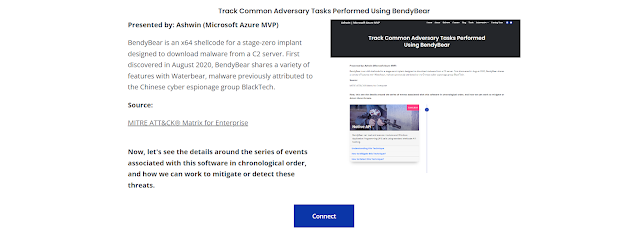Track Common Adversary Tasks Performed Using BendyBear
To know more about it, you can go through my detailed document by clicking here
Overview
BendyBear, an x64 shellcode used for a stage-zero implant that's designed to download malware from a C2 server, was first detected in 2020 and also shares some of its features with Waterbear.
Capabilities
Some of the important capabilities of BendyBear are:
- It can easily transmit payloads into modified RC4-encrypted chunks because one RC4 key can't decrypt the entire payload.
- It's very difficult to detect as it can perfectly hide from cybersecurity by checking its environment for signs of debugging.
- It can clear the host's DNS cache whenever it tries to communicate with C2 server, hence, resolving the current IP address of the malicious C2 domain every time.
- Exclusive session keys are generated for every C2 server connection.
- As it uses polymorphic code, it can completely change its runtime footprint during code execution in order to thwart memory analysis and avoid sign signaturing.
- It regularly encrypt or decrypt function blocks as required to avoid detection.
- It makes use of Position Independent Code (PIC) to throw off static analysis tools.
Prevention
The following measures might help in mitigating the cyber threat:
- Regularly review as well as update the existing security rulesets.
- Block unknown outbound TCP traffic in security policies whenever required.
- Always update the software and mitigate any identified vulenarbilities.
- You can also enhance perimeter and endpoint defense with the help of the techniques like whitelisting, behavior analysis, and sandboxing via advanced endpoint & network security solutions.
To know more about it, you can go through my detailed document by clicking here




Comments
Post a Comment